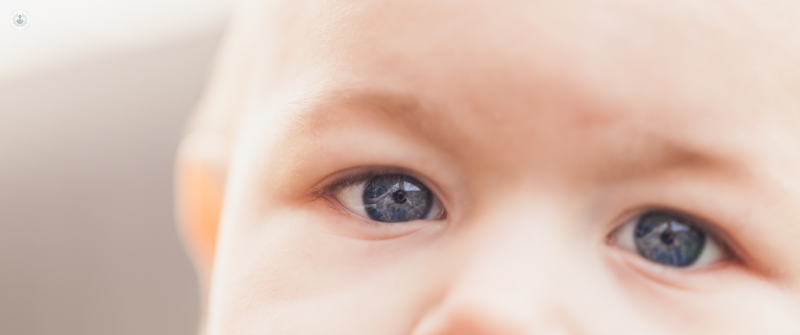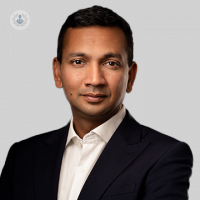Lazy eye: an expert’s guide to ambylopia
Escrito por:A lazy eye (known by the medical term “amblyopia”) is a relatively common condition. It is thought to affect about 4% of people. It tends to manifest in childhood and can reduce the child’s vision in one eye. Expert ophthalmologist Mr Saurabh Jain explains what causes a lazy eye and how it can be treated.

Signs of amblyopia
In amblyopia, one eye does not build a strong connection to the brain and as a result, the patient’s vision suffers in that eye, causing them to rely on the other one. They may not even be conscious of this and the condition may go undiagnosed due to a lack of symptoms. It is usually noticed during routine optician’s check-ups or vision screenings at school, although it may be spotted if it is associated with a squint (strabismus).
What causes a lazy eye?
Several things can cause amblyopia:
- A difference in power between the two eyes – if one eye has a significantly weaker refractive power, the brain will learn to rely on the stronger one, resulting in the weaker one being under-developed.
- Childhood cataracts – these can cause impaired vision in one eye, again causing unequal signals going to the brain and eventually leading to under-development of one eye.
- Ptosis – a drooping eyelid can, again, obstruct the vision in one eye, leading the brain to rely on the other.
- Strabismus
Amblyopia vs. strabismus
Many people use the term “lazy eye” to refer to a misalignment of the eyes, where one eye looks forward and the other leans in a different direction. This is actually a condition called a squint or strabismus, whereas a true lazy eye (amblyopia) is one whose vision is comparatively weaker than the other. To confuse things even further, the two conditions may occur together, with the deviation of the squint causing the poor vision. However, it is important to distinguish between the two conditions when approaching treatment.
Amblyopia treatment
The sooner that treatment begins, the better. If lazy eye treatment begins before the age of seven, it tends to be at its most effective, although that’s not to say nothing can be done to help if it is diagnosed later.
Amblyopia treatment involves impeding the stronger eye, which forces the brain to rely on the weaker one, encouraging it to develop a stronger visual connection. There are a number of options to achieve this:
- An eye patch – this is placed over the good eye for between 30 minutes and 6 hours a day, depending on the severity of the case.
- Eye drops – these blur the vision in the good-eye for an extended period.
- Squint surgery – the operation treats strabismus rather than amblyopia, but by correctly aligning the affected eye, both eyes can work better together. The best results tend to be achieved after other lazy eye treatments have been completed.
Mr Jain can provide expert advice on which is the best approach for your child. To book an appointment, visit his Top Doctors profile.


